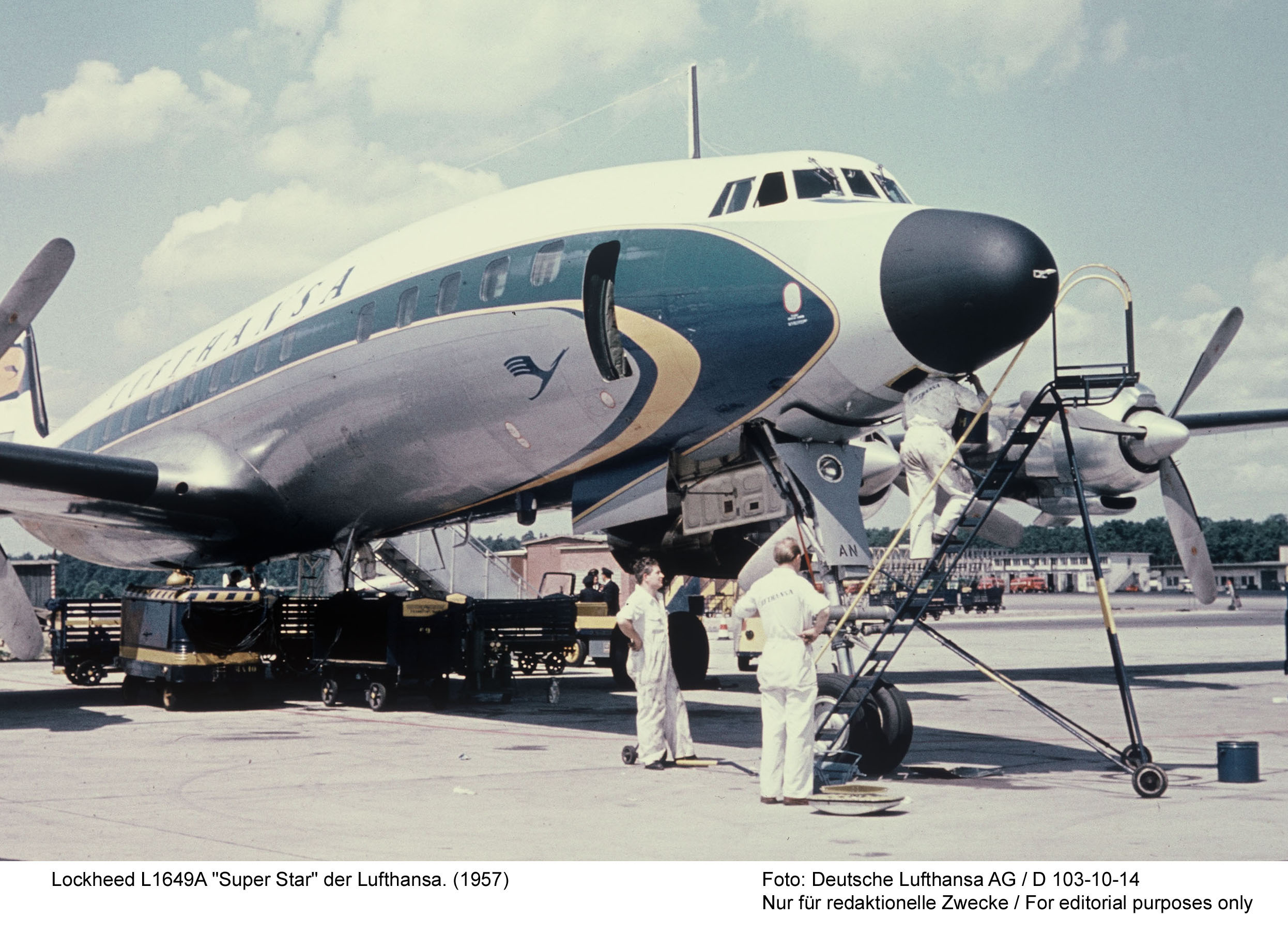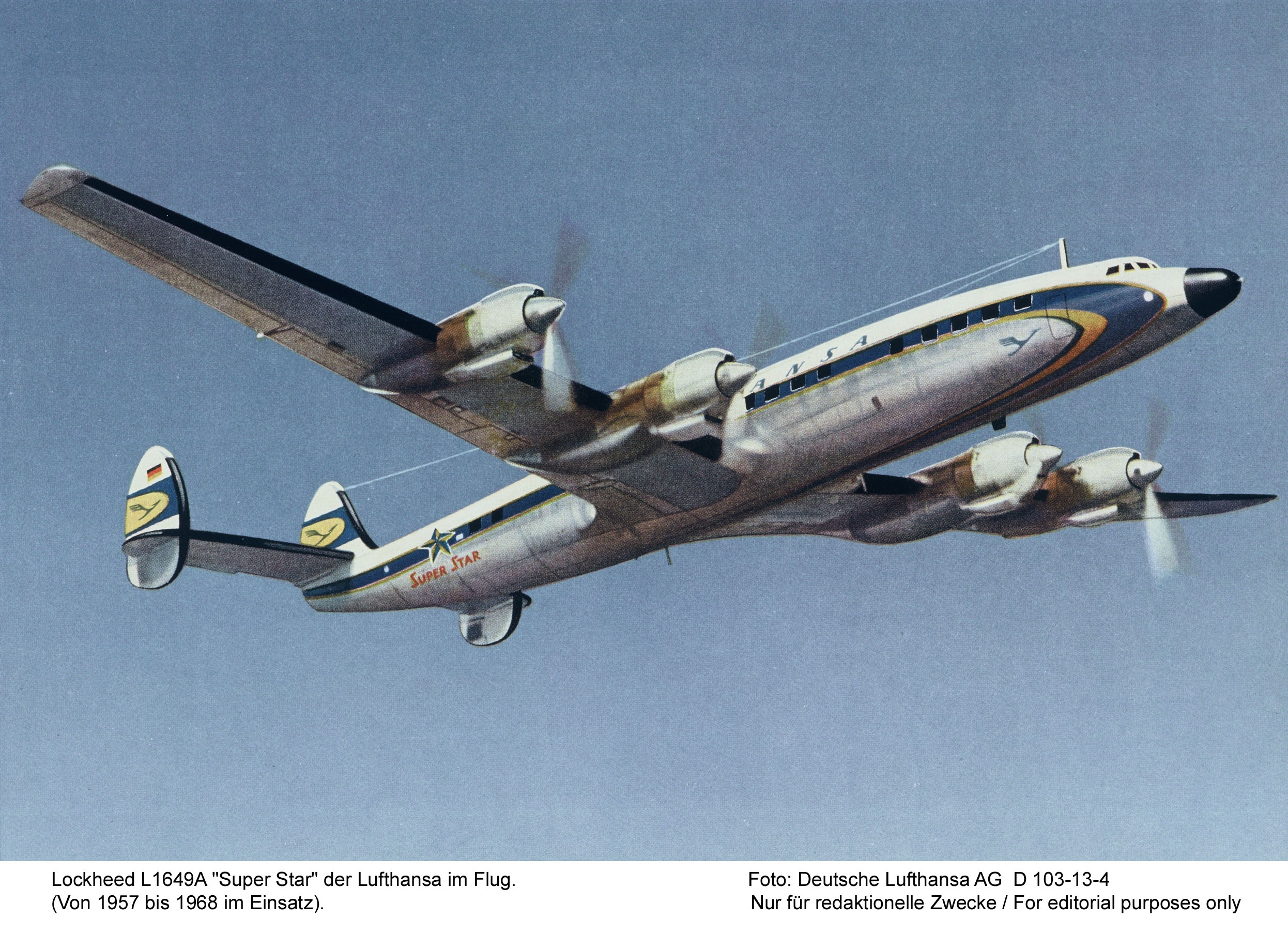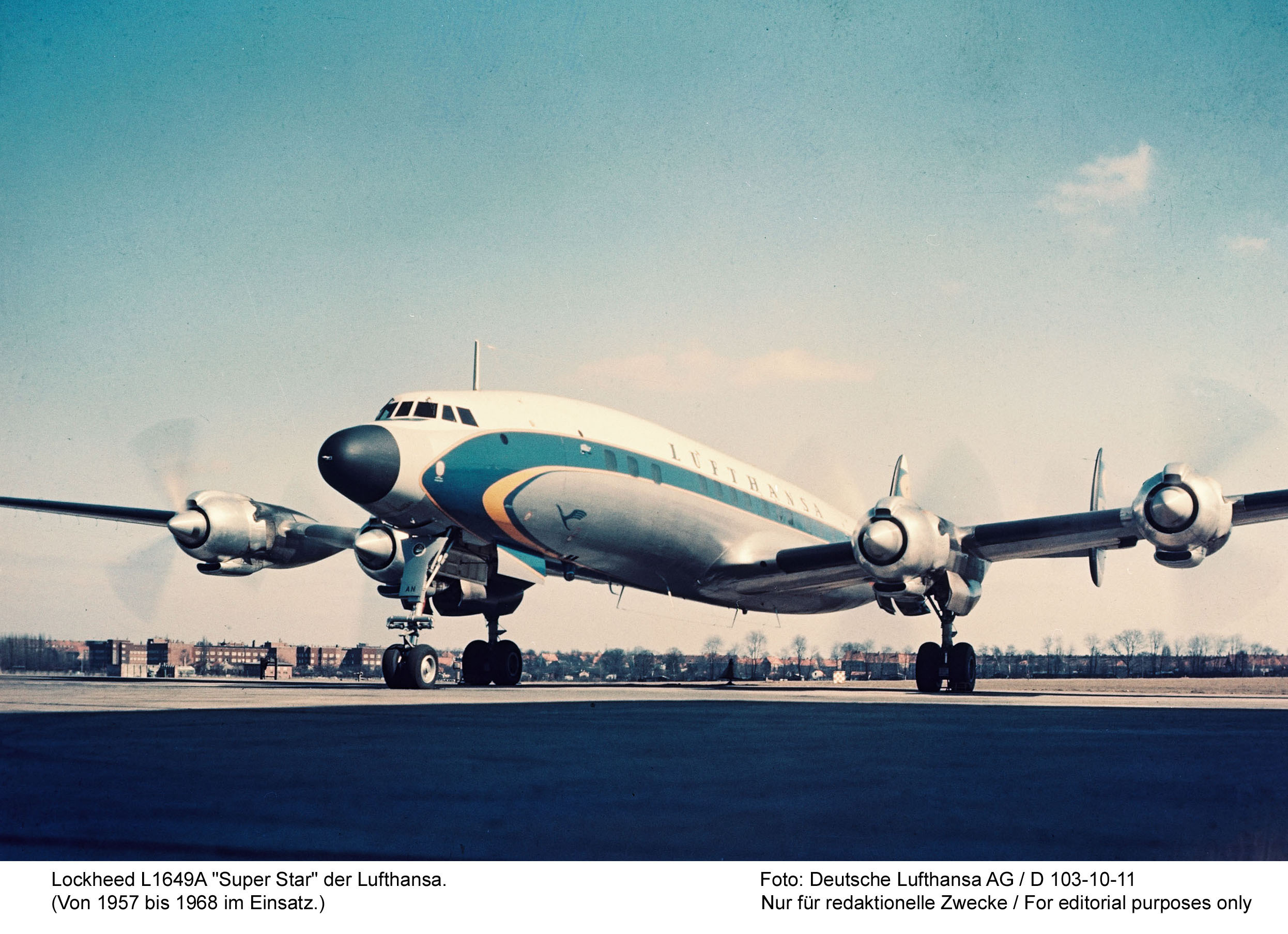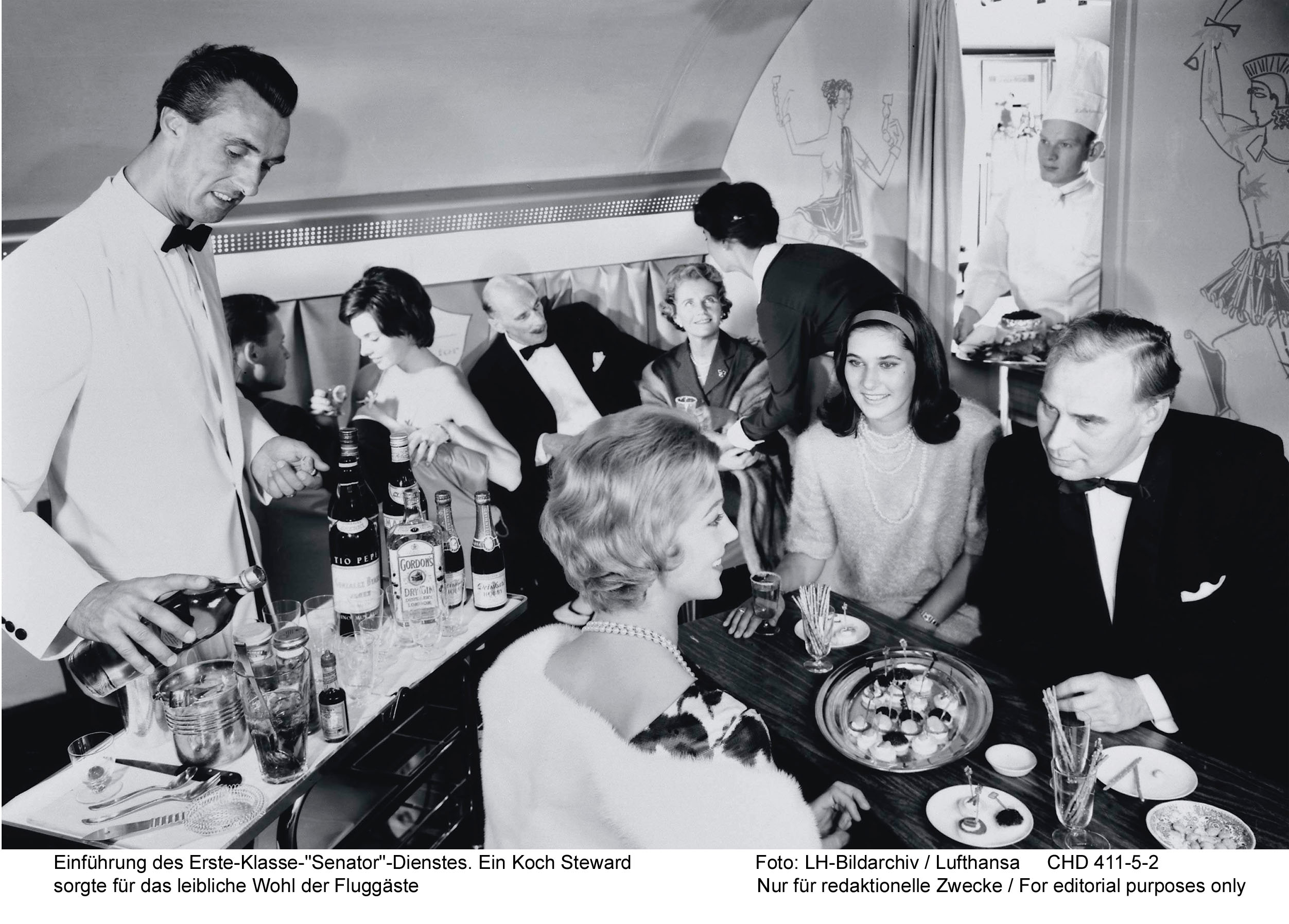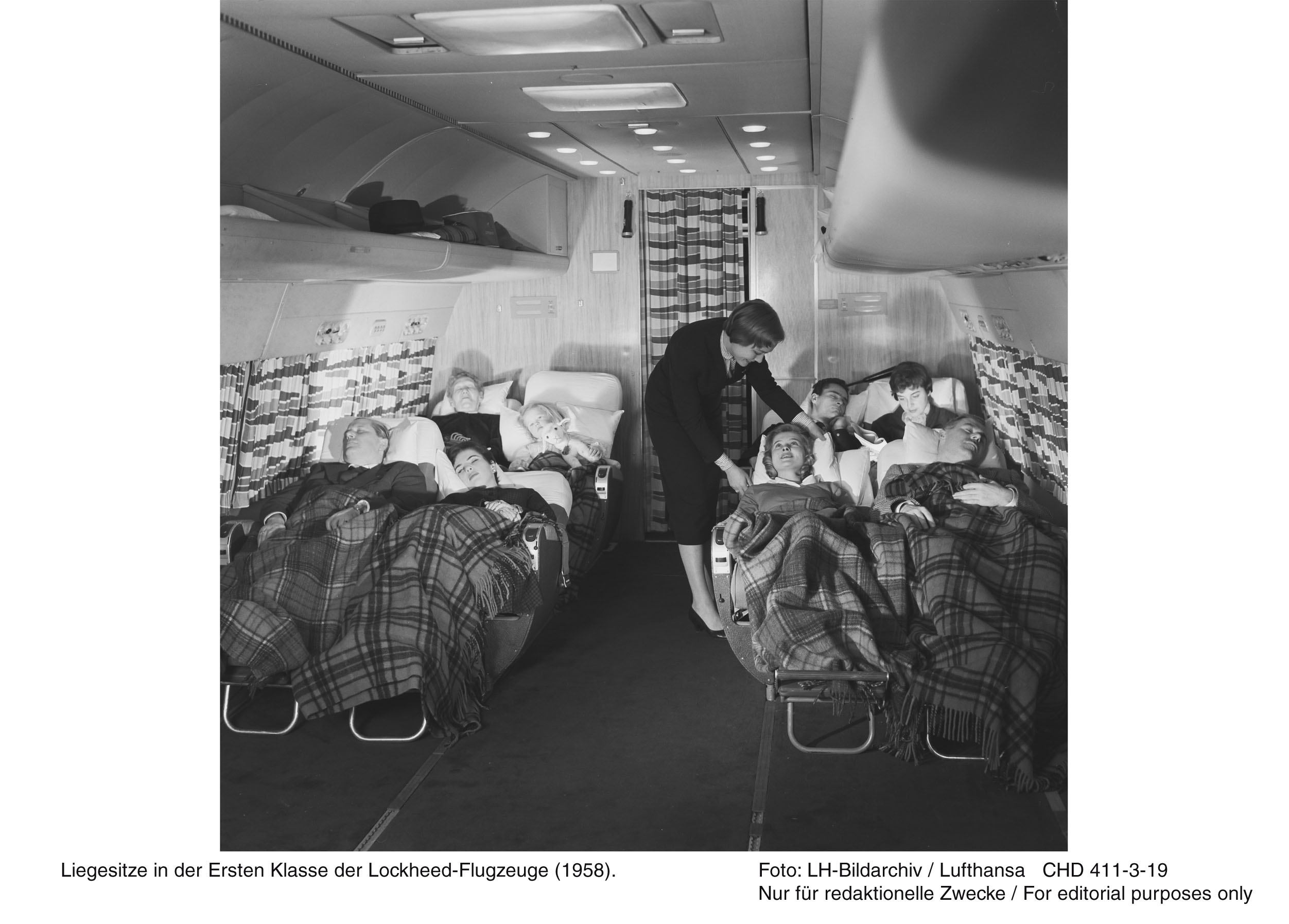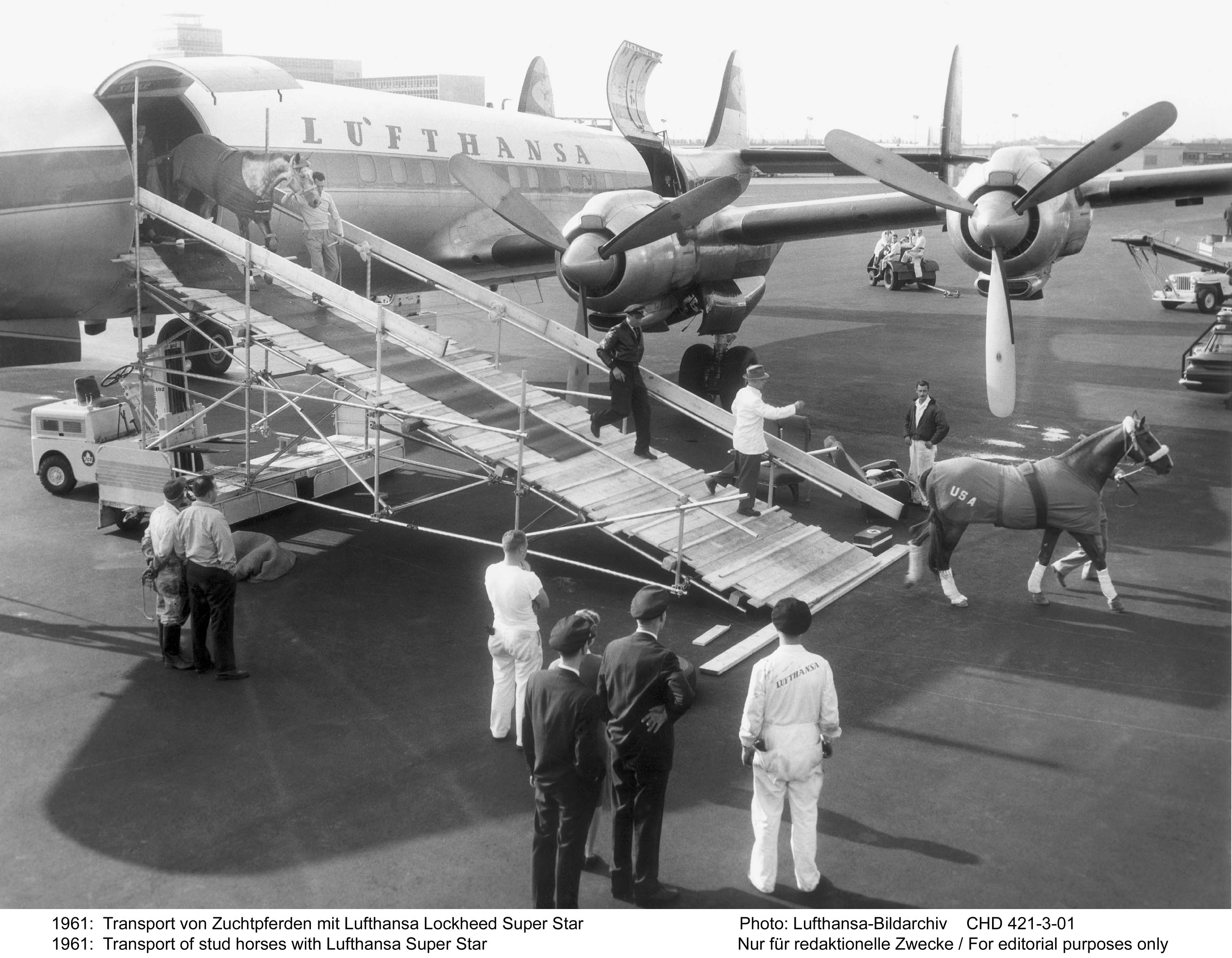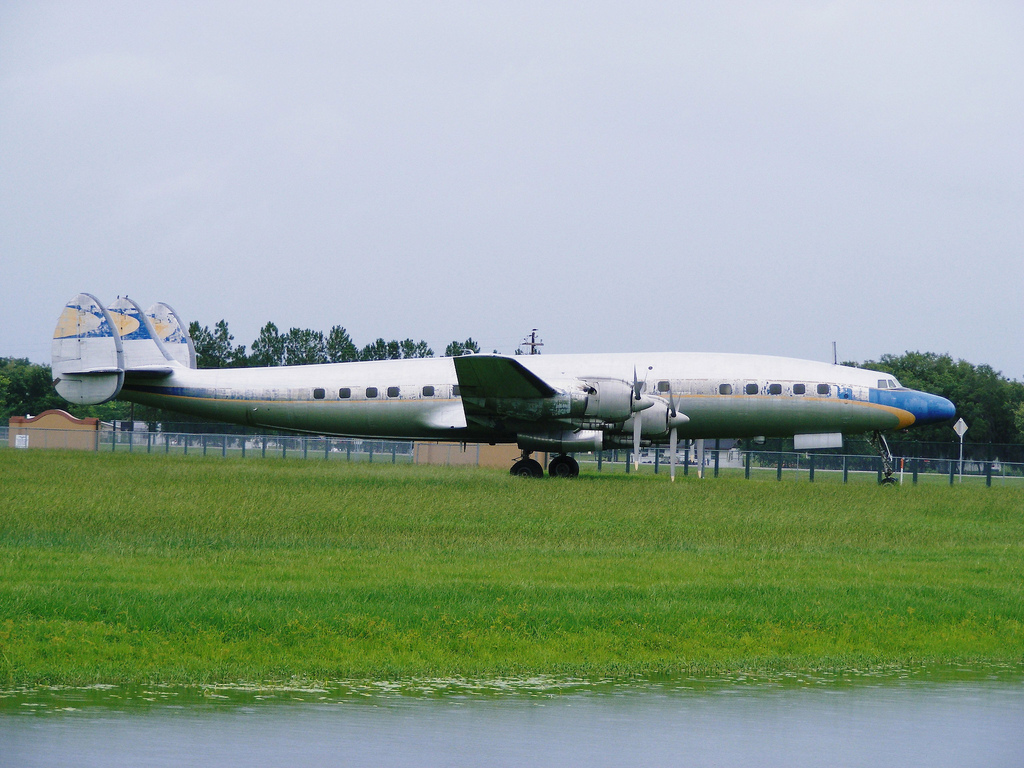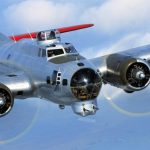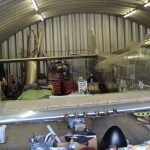The Lockheed Constellation is one of the most iconic airliners ever built, and one could even go so far as to say it is one of the most beautiful aircraft ever designed. The Constellation still resonates strongly with today’s aviation enthusiasts as much as it must have when the type first entered service in the early 1940s. There were a number of evolutions in the design during the course of its production run, starting with the L-049 in 1943 (which entered service with the military as the C-69), and culminating in the L-1649A of 1957. Even though the L-1649 had the same basic shape as the L-049, it was actually radically different in both size and performance… so much so that Lockheed gave the aircraft a new name… The Starliner. As an example of how much the design had improved; the L-1649 could fly about fifty knots faster with roughly double the maximum take off weight of the first in breed! The L-1649 emerged during the clarion call of jet aviation, however, so it enjoyed only limited period at the forefront of intercontinental passenger service.
Of the forty four L-1649s to roll off the production line, just four now survive, with none currently airworthy… but that is about to change! Two examples are owned by Lufthansa Super Star gGmbH, a subsidiary of the German national flag carrier, and they have contracted Lufthansa Technik to rebuild one of them for service with their fleet of historic airliners. WarbirdsNews is collaborating with this team to bring our audience details on progress with this massive, down-to-the-last-rivet restoration, and are thrilled to have the help of aviation journalist, Wolfgang Borgmann, in relating the story. We will split his first article discussing the project into two parts, with the first section here describing the sentimental grip that the L-1649 still holds on the beating heart that is Lufthansa.
——————————–
The Lufthansa Super Star Project – On the wings of a legend
by Wolfgang Borgmann
When the Lockheed Super Star entered commercial service in 1957, the jet age was about to commence on North Atlantic routes. The L-1649A thereby heralded the grand finale of the legendary piston-engined propeller era between Europe and North America. Earlier versions of the famous Lockheed Constellation, initiated by the legendary aviator Howard Hughes, had already blazed the trail of world air travel, but it was the honor of those final L-1649A’s to open up a new set of horizons. Being the first airliner to fly nonstop between the ‘Old’ and the ‘New’ World, the Super Star considerably shortened travel times across the Atlantic Ocean. However, even the most impressive performance data couldn’t hide the hard truth that with the advent of four-engined jet airliners crossing the North Atlantic in 1958, the era of the great Trans-Atlantic prop-liners was at an end.
Even so, the L-1649 gained the sobriquets ‘Mona Lisa of the Sky’ and ‘Queen of the Sky’ … the Lockheed Aircraft Company themselves stimulated the imagination by catching the stars and christening the last model of their legendary Constellation series with the name of ‘Starliner’.
Lockheed built just forty four L-1649As and only three airlines bought them new, with each giving the type a slightly different name. Trans World Airlines named their elegant propliners ‘Jetstream’ or ‘Radar Jetstream’ when fitted with the then-new weather radar system, Air France called them ‘Super Starliners’ while the four Lufthansa L-1649A’s became ‘Super Stars’.
Super Stars in Lufthansa service
The German national airline operated their four Super Stars between 1958 and 1966, originally on services connecting what was then West Germany with New York City in the USA. On November 6th, 1958, Lufthansa inaugurated the legendary ‘Senator’ all-first-class service exclusively offered on board their L-1649A’s. The first passengers on board the premiere flight were treated to a level of comfort and service never before seen, which contributed to the highly regarded reputation and legendary status of the Super Star.
In addition to ‘Comforette’ First Class seats, an on-board lounge awaited passengers during the flight for ‘a twaddle, fancy games or a serious business talk’ according to a period Lufthansa brochure. Of course this was the 1950s, an era before present-day gadgets like earphones and personal, individually programmable video screens. In the bygone ‘golden’ propeller age, talking with the crew and fellow travelers, watching the passing clouds out of the windows and fine dining were the only ‘in-flight entertainments’ available. Comfort was the byword. Apart from fully reclining seats, there were also sleeping berths that folded down from the cabin ceiling during night flights. The Lufthansa Super Star carried a maximum of 32 premium passengers all of whom were pampered in its exclusive all First Class cabin.
But all the comfort and exclusivity couldn’t outweigh the speed advantages of the dawning Jet Age. In spring 1960, Lufthansa inaugurated jet services across the North Atlantic with their brand new Boeing 707-430 ‘Jet Intercontinental’ – thereby cutting travel times by almost half in comparison to the Super Star. As a consequence, Lufthansa relegated their Super Star fleet, consisting of D-ALAN, D-ALOL, D-ALER and D-ALUB, to other, less important destinations on the North American continent. Nevertheless, the rapid extension of the Lufthansa jet fleet soon meant the end for Super Stars on most long-range passenger routes, limiting their use to European and even German domestic services.
Seeking a new lease of life for their relatively new prop-liners, Lufthansa contracted Lockheed Aircraft Services in California to convert two Super Stars, D-ALAN and D-ALUB, into freighters in 1960. In this all-cargo configuration the pair of L-1649s returned to New York Idlewild (now Kennedy International Airport) as part of the Lufthansa ‘Supercargo’ network. Equipped with large, main deck cargo doors, the two Super Star freighters initially complemented D-ALER and D-ALOL, which kept their original passenger layouts. After an interim lease of the two freighters to World Airways in 1962, they returned to Lufthansa in 1964 and remained a part of the fleet until their final retirement in 1966. Lufthansa sold D-ALAN that year to Parker & Ransom Aircraft Sales, Inc., based in Houston, Texas while D-ALUB ended as an airplane restaurant in Northern Germany. Sadly it burned out soon after. The two remaining Super Stars in passenger configuration, D-ALOL and D-ALER, moved on lease to World Airways in 1962. During 1964, Lufthansa sold them to Trek Airways in South Africa. Miraculously D-ALAN and D-ALOL survived the following decades and are currently preserved in US and South African aviation museums.
Prelude to the Lufthansa Super Star project
In the early 1980’s, Lockheed Super Star enthusiast and pilot Maurice Roundy acquired three L-1649A’s when they became available at the end of their useful commercial lives. Over the years, Roundy devoted all his time, talent and fortune to keep his three “Mona Lisa’s of the Sky” intact and endeavored to fly them to his hometown in Auburn, Maine. Eventually he succeeded in bringing N7316C and N8083H safely home, but the former Lufthansa Super Star flagship D-ALAN had to be parked at an airport in Florida for good (she is at Kermit Weeks’ facility in Polk City).
In 2007, freelance aviation journalist Wolfgang Borgmann and former Lufthansa Super Star pilot Didi Krauss learned from Maurice Roundy that he would put his three L-1649’s up for auction. Thrilled by this once in a lifetime opportunity, the two managed to quickly pass on the spark of enthusiasm for the idea of a “new” flying Super Star in Lufthansa colors to the head of Lufthansa Technik, August Wilhelm Henningsen. He deserves all the merit for bringing the project on the road to success within the Lufthansa Group, which culminated with a successful auction bid in December 2007. Ever since, Mr. Henningsen devotes all his knowledge, contacts and passion to the Super Star project – being its indisputable dean since kick-off.
On the road to success
Deutsche Lufthansa Berlin Foundation, then responsible for the project management before the freshly-created Lufthansa Super Star gGmbH (LSSG) took over this role in 2015, entrusted Lufthansa Technik with the overhaul of one of the three auctioned L-1649A’s into airworthy condition.
LSSG is an affiliated company of Lufthansa Commercial Holding – a subsidiary of Deutsche Lufthansa AG. As owner of the Lockheed L-1649A, LSSG is responsible for the current Super Star restoration in Auburn, Maine, and will be in charge of its future flight operations. Due to its charitable status in Germany and the United States, donations to LSSG are tax deductible in both countries. Its US affiliate is the German American Aviation Heritage Foundation (GAAHF). GAAHF is a Washington, DC-based not-for-profit organization.
The project websites:
superstar.lufthansa.com
www.GAAHF.org
End of Part 1… tune in soon for Part 2 of this article with an up-to-date progress report on this mammoth restoration project
————————————-
WarbirdsNews will be reporting further on this exciting project and wishes to thank Wolfgang Borgmann for his work on this piece, Natalie Hartman of the Markham Group and of course Lufthansa Super Star gGmbH, Lufthansa Technik and the German American Aviation Heritage Foundation for making it possible.







